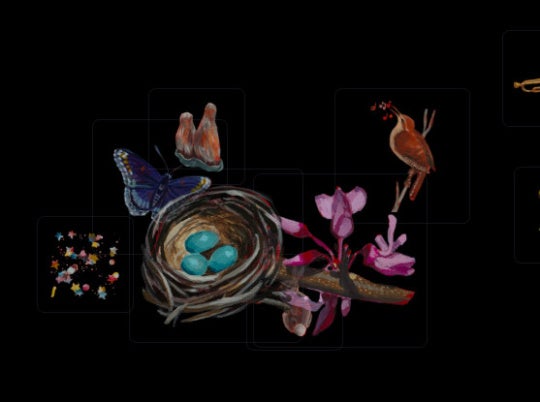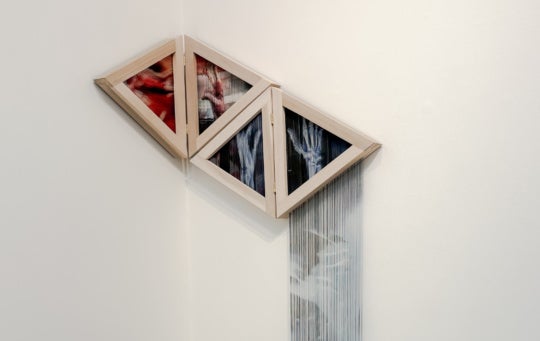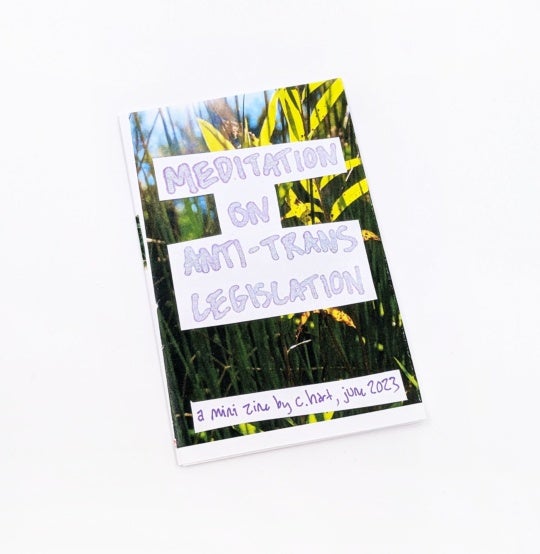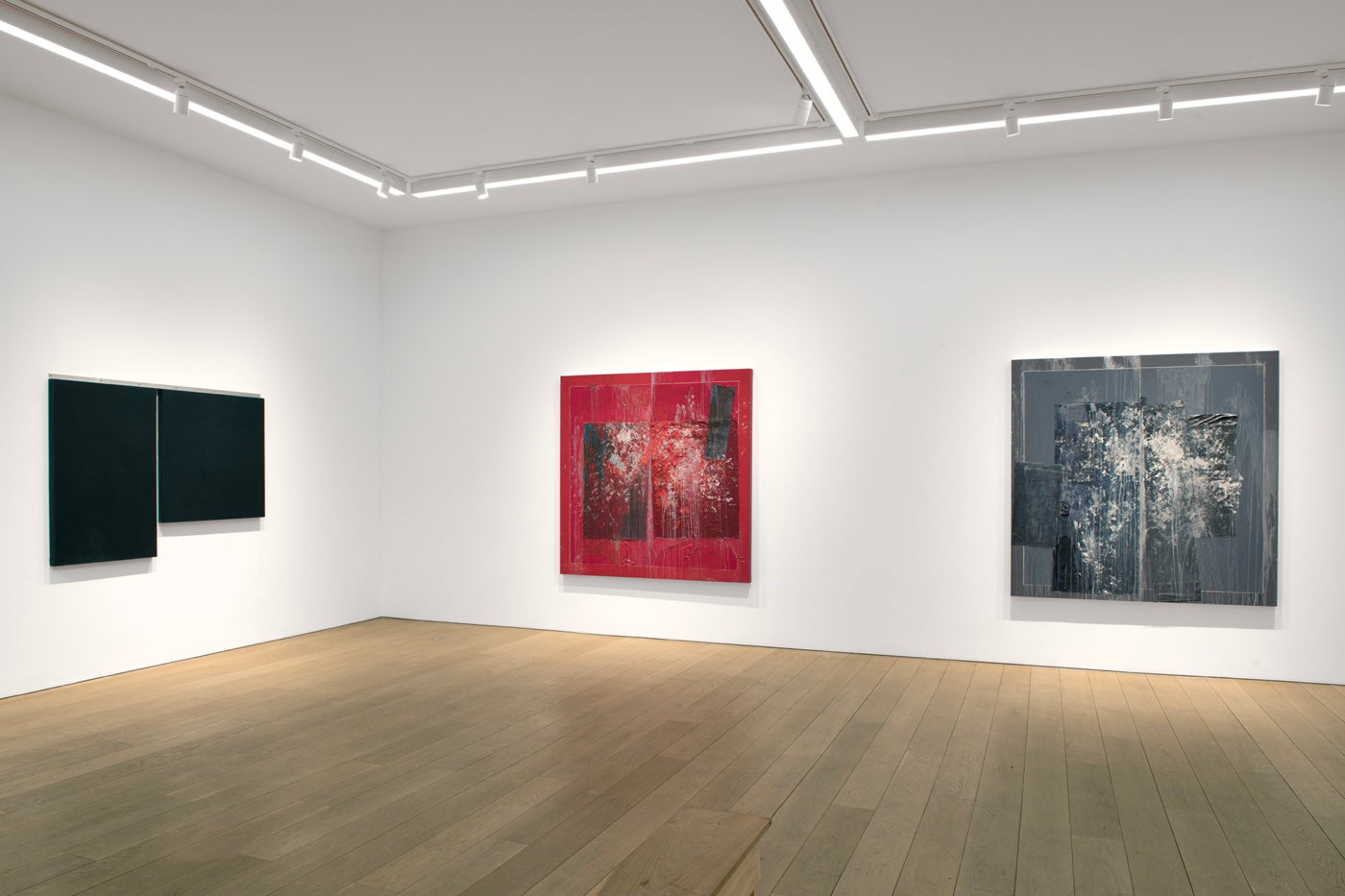
Representation can take on a double meaning, both the presence of an image and an identity within a field. The legibility of the object must be contended with first. The absence of an image could, on the one hand, emphasize the materiality and visuality of each work—a resistance to references outside of aesthetics. On the other hand, it could reinforce the traces of decisions made by their maker, and thus propose subjectivity as fundamental to an object’s meaning.
According to the press release, “Hurley and Sylvester share an investigative approach to painting, pushing the boundaries of material, structure, and spatial perception while crafting layered reflections on presence, identity, and memory.” How is the identity of the maker recognized in abstraction and how much of that has to do with the intention of the artist? This is the question I arrived at in visiting Beyond the Frame: Abstraction Reconstructed, a Two-Person Exhibition Featuring Denzil Hurley and Reginald Sylvester II, organized by Christiana Ine-Kimba Boyle.
Sylvester’s Offering (Deep Blue) (2024), a tall vertical canvas, cut and stretched to reveal black stretcher bars on its top and bottom, is juxtaposed next Hurley’s Portal and the Deep Blue #1 (2012), a small work on paper in which a blue vertical rectangle is surrounded by another rectangle made by an accretion of black marks. In the next room is a work by Hurley that is a long, thin black vertical rectangle, propped on a paint splattered wooden box called Portal J2#1 (2015-17). Next to that is a long, thin vertical work by Sylvester, Semi 004 (2024), with hundreds of marks made on a black ground with what looks like umber, burnt sienna, and a range of grays.
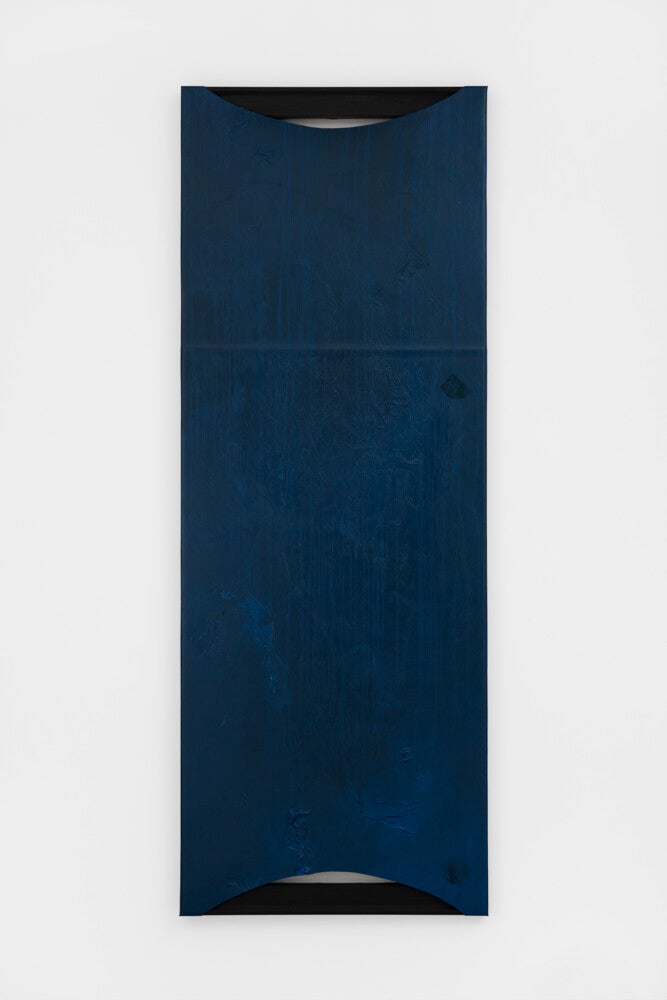
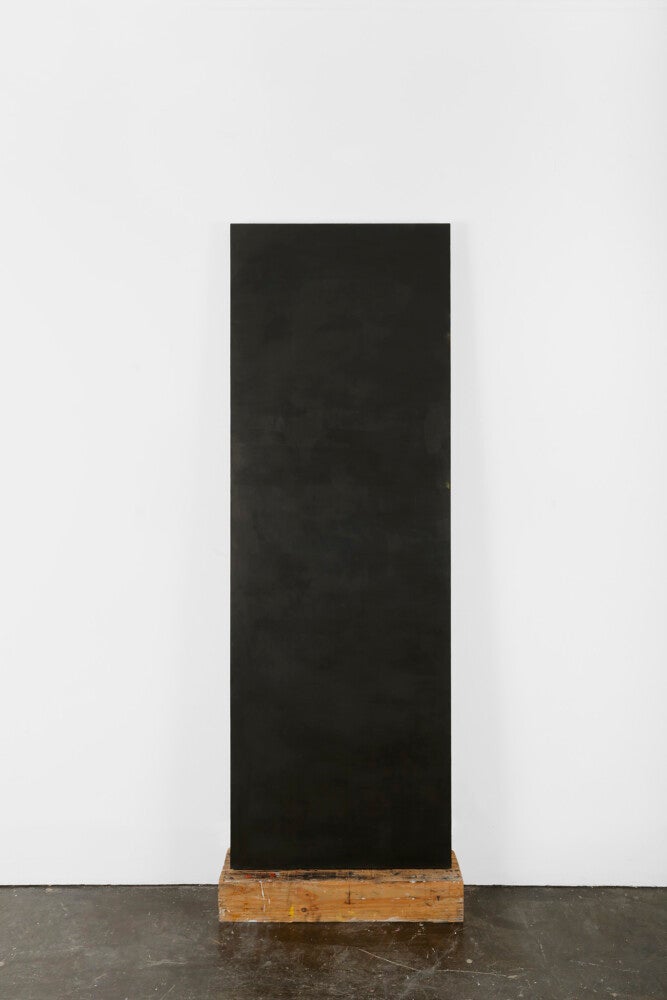
In this cycle of comparisons are long, thin compositions, vacillating between black and blue, and shifting between the canvas acting as a body or a window. Sylvester’s Offering (Deep Blue) and Hurley’s Portal J2#1 felt like bodies, their surfaces mirroring taut skin. Whereas Hurley’s Portal and the Deep Blue #1 and Sylvester’s Semi 004 act more like apertures, mostly because of the presence of a figure/ground relationship. This tension between the actuality of the surface and suggestions of implied pictorial space is at the center of twentieth-century abstraction. So too is the tension between the painting as a readymade (a thing in itself) and as a picture (a thing that points to something outside of itself).
Later in life, as Hurley added objects to his paintings, he started to play with this tension. His work Shovel/Glyph (2019) is a small, black squarish painting with the shaft of a wooden shovel, a mashup of Duchamp’s work In Advance of a Broken Arm and Malevich’s Black Square, both from 1915. A painting is a thing and an image of a thing. Just as a painting oscillates between a body and window, so too does the identity of an artist—an autonomous subject and at the same time, a signifier of communities both inside and outside of one’s self. How much is accounted for the fact that Hurley was born in Barbados and Sylvester’s familial roots are in Jacksonville, North Carolina, dating back to the Confederate era?
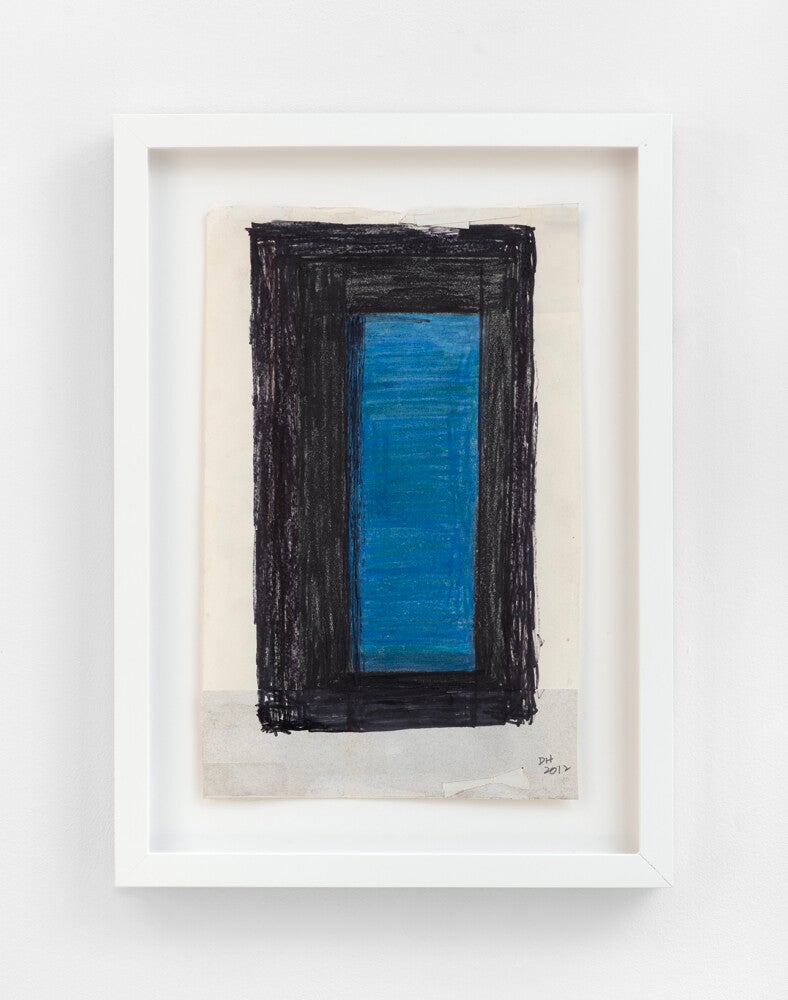
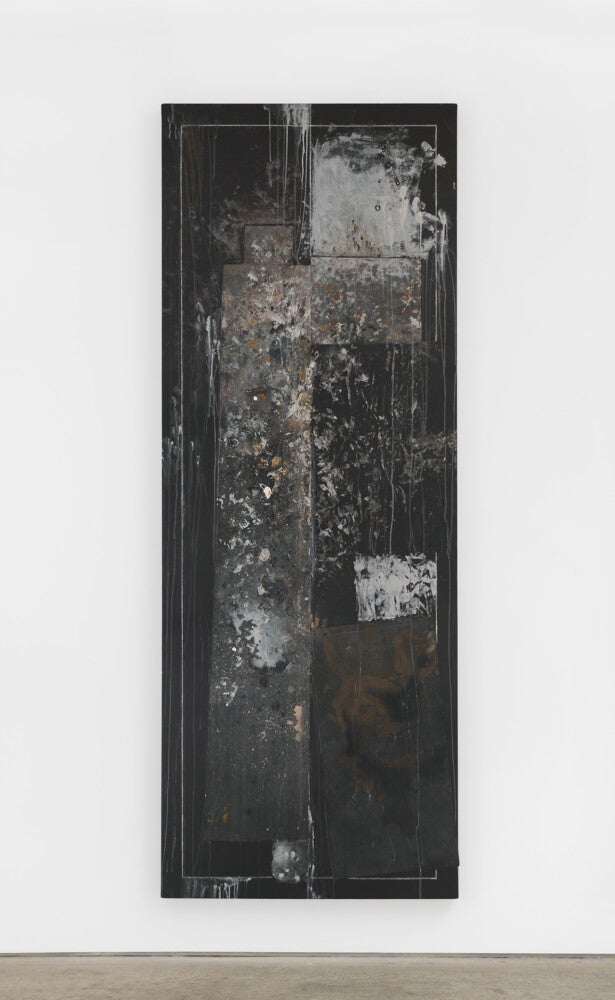
The writer Gervais Marsh, who curated a survey of Hurley’s work at CANADA in 2023, wrote about Hurley’s commitment to the quotidian motions of the painting process as tidalectics. Citing the Barbadian poet and scholar Kamau Brathwaite, Marsh says, “Tidalectics references the ebb and flow of the ocean as a site of interconnection between Africa and the Caribbean islands while also holding the fragmented histories that shape Caribbean subjectivity.”1 Imagine this ebb and flow moving past the Antilles up the Atlantic Coast to the shores of Sylvester’s youth. Perhaps this is a way of thinking, not only about an artwork’s relationship to its maker, but the subjectivity of that maker and the tensions between past and present locations.
Overall, Hurley’s attention to the minute shifts in color and surface in his works seem more attuned to open questions than Sylvester’s, which reveals a different sensibility towards abstraction. While Hurley flirted later in life with the painting as a readymade, it seems to me that Sylvester accepted painting and abstraction as fully formed ideas to be implemented, much like one might use a shovel. One is not inherently better or worse than the other, but they do reveal different attitudes embedded in their respective historical contexts. In the twentieth century, there were numerous manifestos declaring a singular way that abstraction should be used. These two artists show that abstraction has a multitude of meanings and uses—and that is a good thing.
[1] Gervais Marsh, “The Visual Frequencies of Denzil Hurley.” Denzil Hurley (Los Angeles: Inventory Press, 2023), p10.

